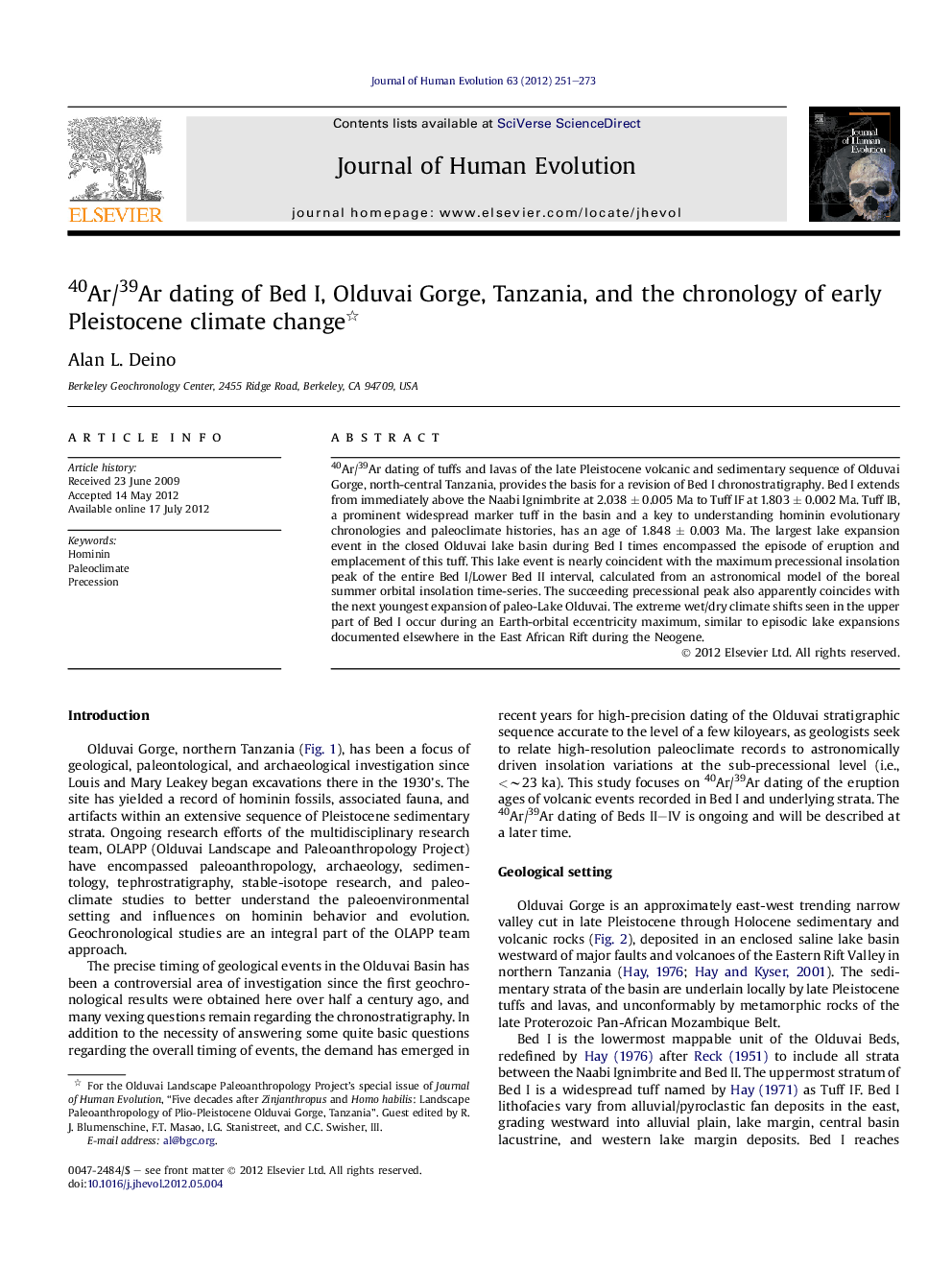| Article ID | Journal | Published Year | Pages | File Type |
|---|---|---|---|---|
| 4556444 | Journal of Human Evolution | 2012 | 23 Pages |
40Ar/39Ar dating of tuffs and lavas of the late Pleistocene volcanic and sedimentary sequence of Olduvai Gorge, north-central Tanzania, provides the basis for a revision of Bed I chronostratigraphy. Bed I extends from immediately above the Naabi Ignimbrite at 2.038 ± 0.005 Ma to Tuff IF at 1.803 ± 0.002 Ma. Tuff IB, a prominent widespread marker tuff in the basin and a key to understanding hominin evolutionary chronologies and paleoclimate histories, has an age of 1.848 ± 0.003 Ma. The largest lake expansion event in the closed Olduvai lake basin during Bed I times encompassed the episode of eruption and emplacement of this tuff. This lake event is nearly coincident with the maximum precessional insolation peak of the entire Bed I/Lower Bed II interval, calculated from an astronomical model of the boreal summer orbital insolation time-series. The succeeding precessional peak also apparently coincides with the next youngest expansion of paleo-Lake Olduvai. The extreme wet/dry climate shifts seen in the upper part of Bed I occur during an Earth-orbital eccentricity maximum, similar to episodic lake expansions documented elsewhere in the East African Rift during the Neogene.
